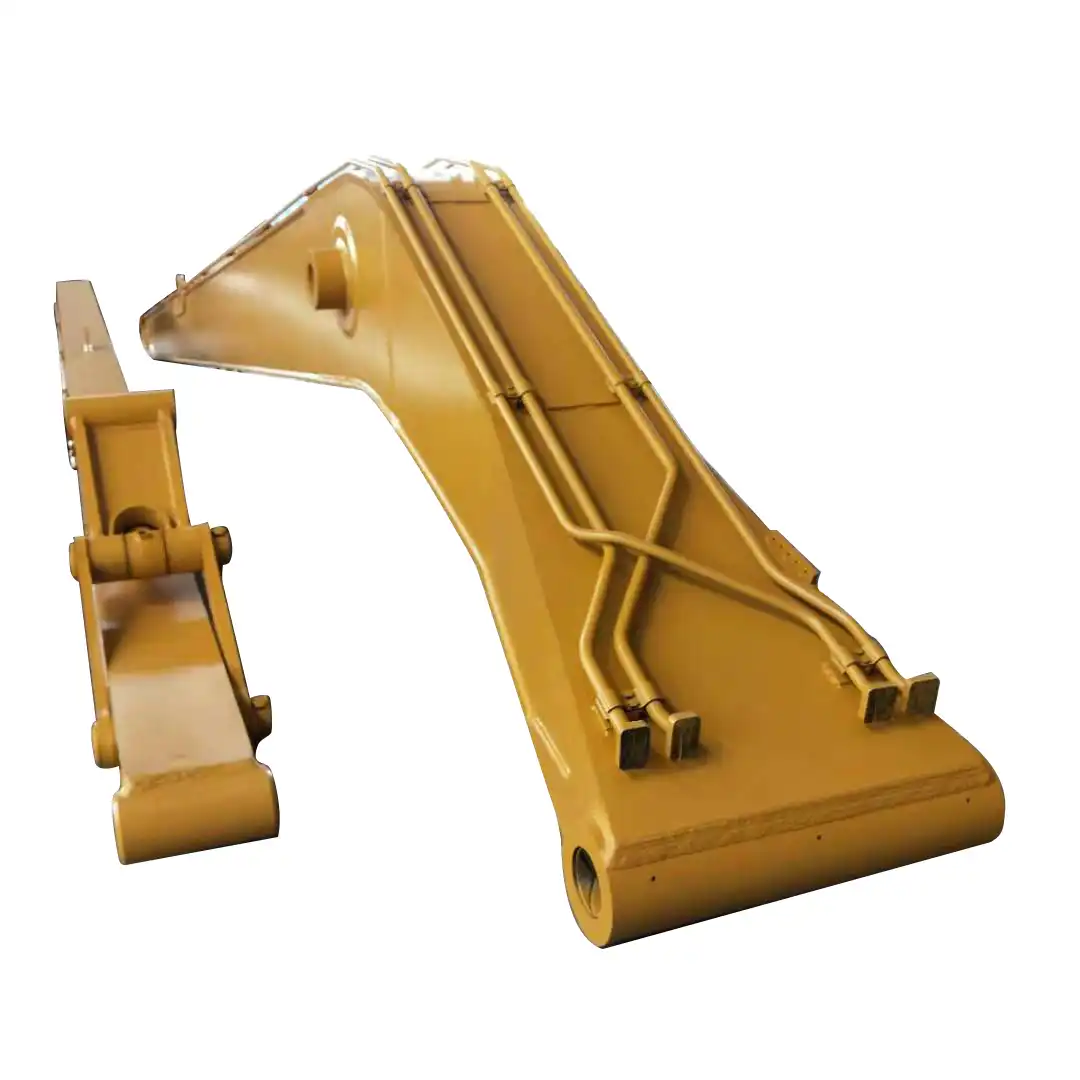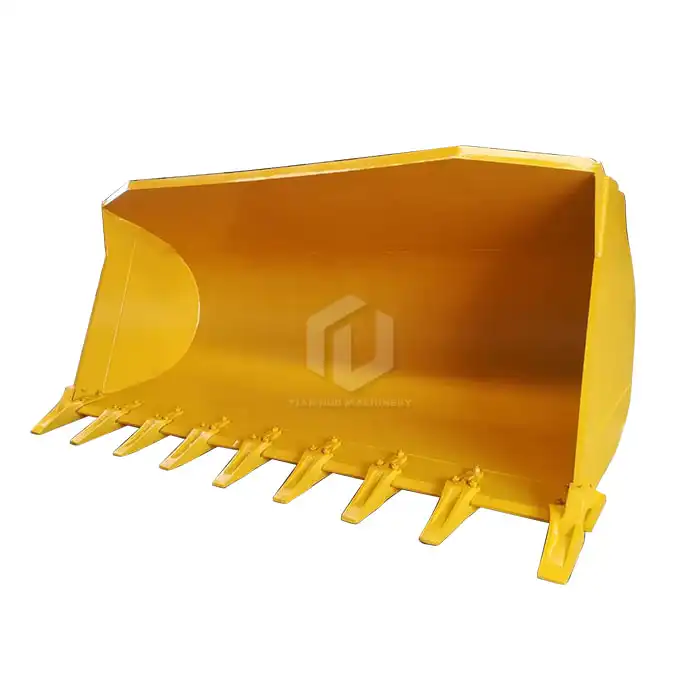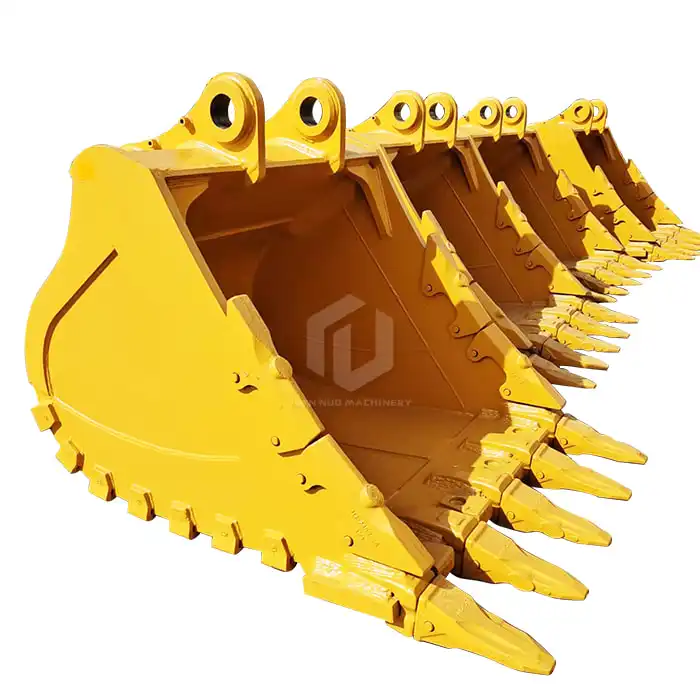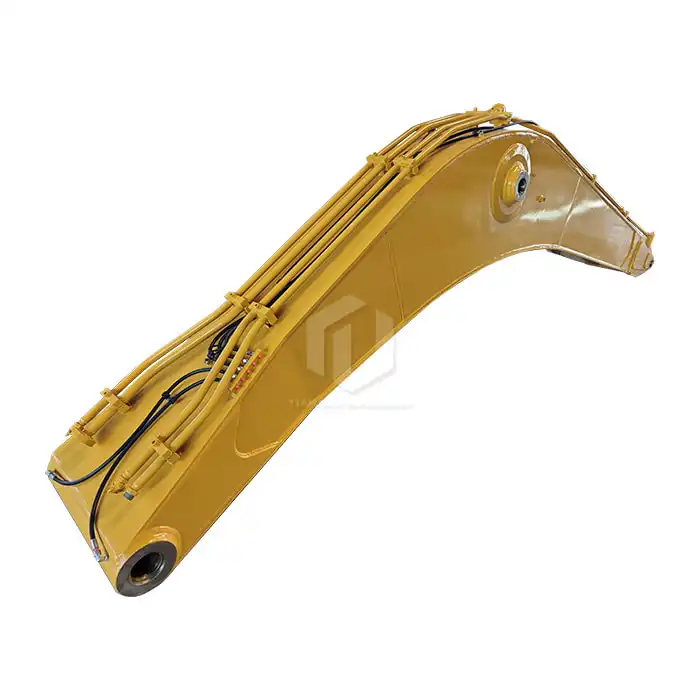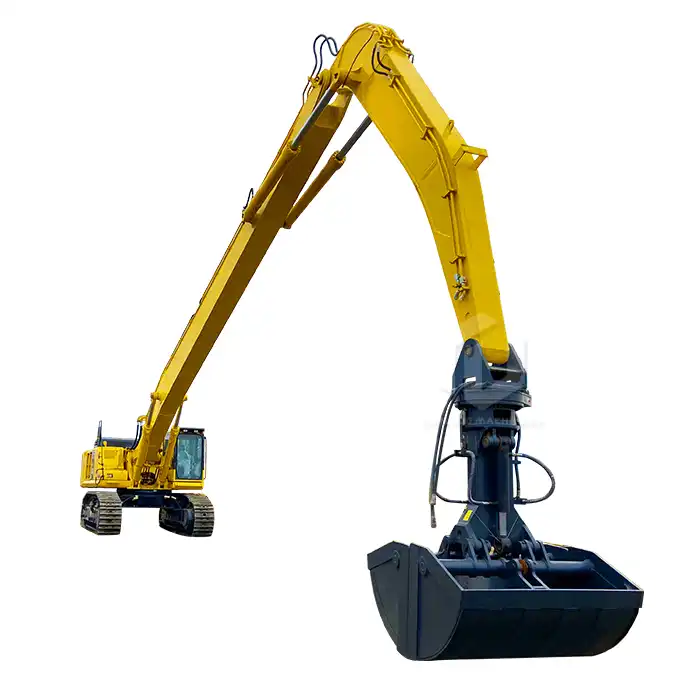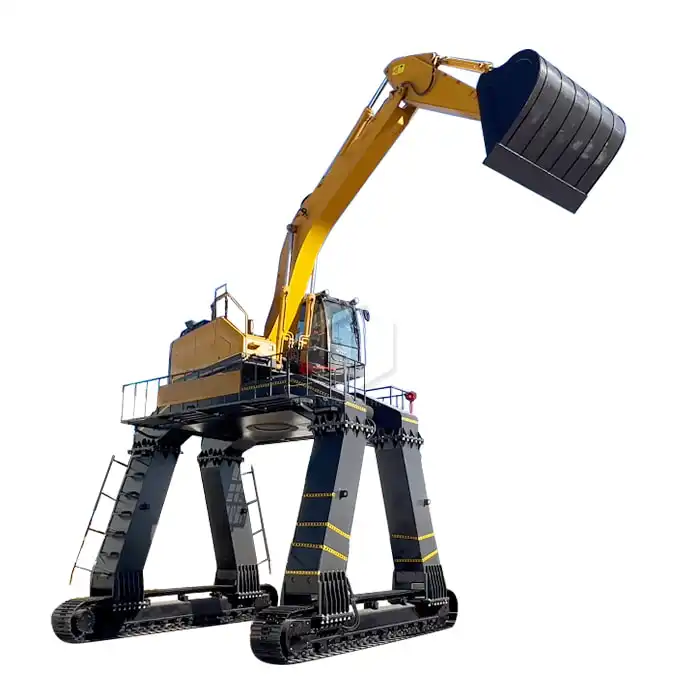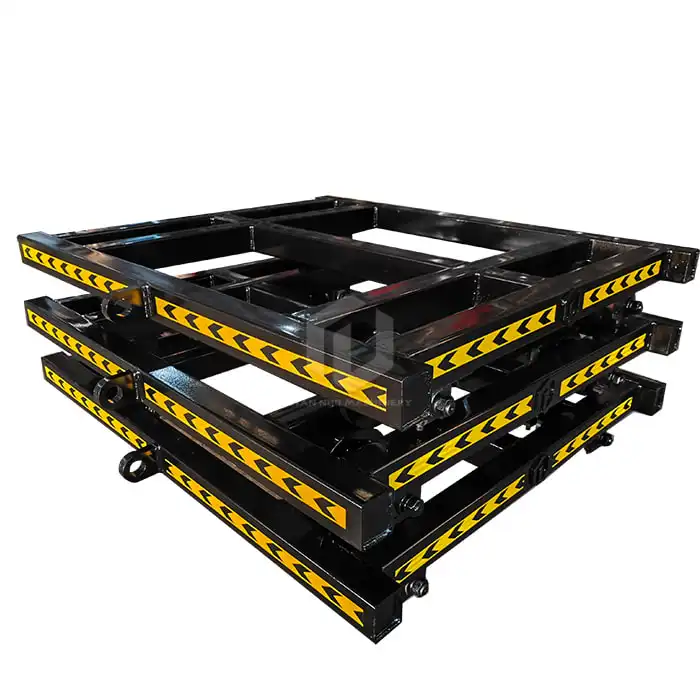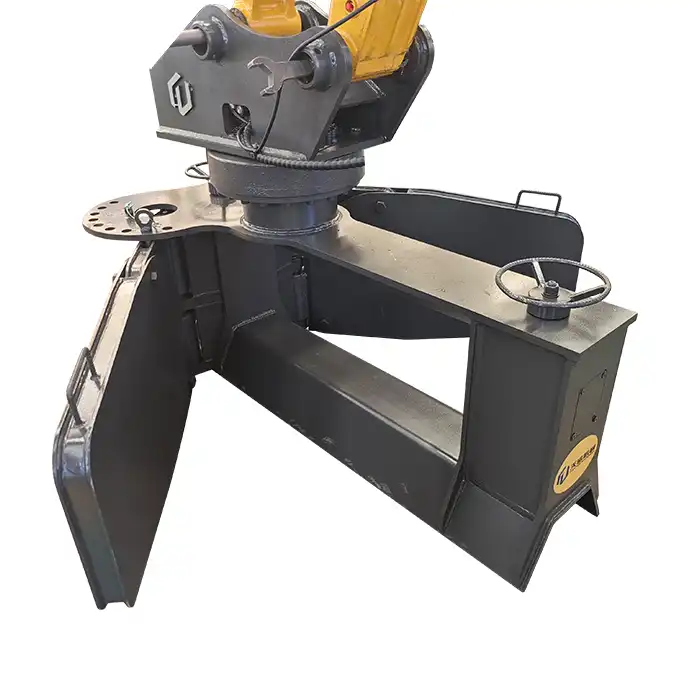Excavator Wood Clamps Features
Excavator wood clamps are essential attachments in the forestry and construction industries, revolutionizing the way logs and timber are handled on job sites. These versatile tools enhance the capabilities of excavators, allowing them to efficiently grasp, move, and stack wooden materials with precision and ease. In this comprehensive guide, we'll delve into the key features, gripping mechanisms, hydraulic operations, and rotary functions that make excavator wood clamps indispensable in modern logging and construction operations.
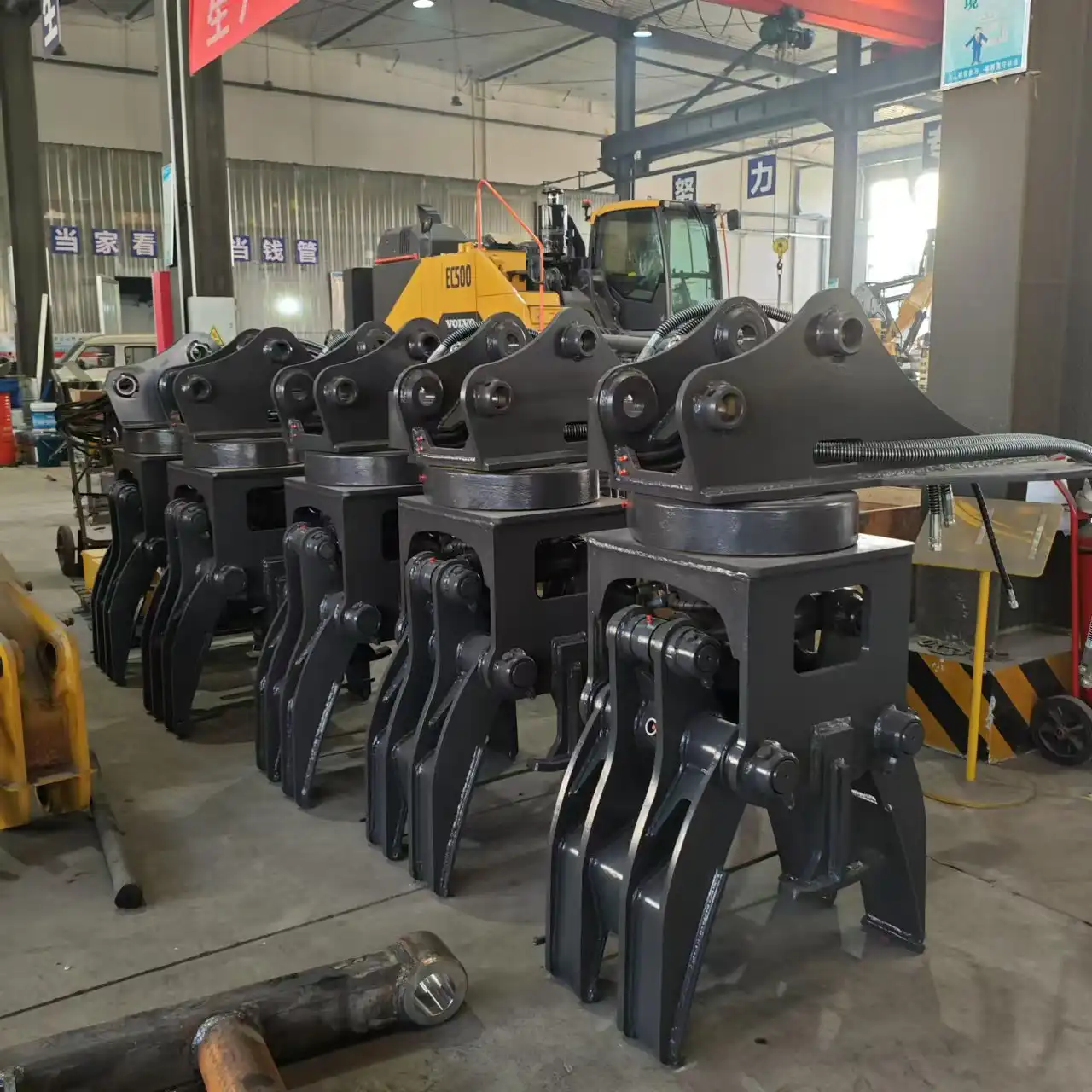
Features and Design of Excavator Wood Clamps
Excavator wood clamps are engineered to provide optimal performance in challenging environments. Their design incorporates several key features that contribute to their efficiency and durability:
Robust Construction: Made from high-strength steel, these clamps are built to withstand the rigors of heavy-duty applications. The sturdy construction ensures longevity and reliability, even when handling large logs or irregularly shaped timber.
Adjustable Grip: The clamps are equipped with adjustable jaws that can accommodate various log sizes and shapes. This versatility allows operators to handle a wide range of wooden materials without the need for multiple attachments.
Protective Padding: To prevent damage to valuable timber, many excavator wood clamps feature rubber or polyurethane padding on the gripping surfaces. This padding provides a secure hold while minimizing the risk of marring or splitting the wood.
Quick-Connect Systems: Modern excavator wood clamps often come with quick-connect hydraulic couplings and mounting brackets. These systems allow for rapid attachment and detachment, reducing downtime and increasing overall productivity on the job site.
Integrated Rotator: Many advanced models incorporate a built-in rotator, enabling 360-degree rotation of the clamp. This feature enhances maneuverability and precision when positioning logs or timber.
The design of excavator wood clamps prioritizes efficiency, durability, and versatility, making them invaluable tools in forestry and construction operations. These features work in harmony to ensure smooth and productive handling of wooden materials in various working conditions.
Gripping Mechanism and Hydraulic Operation
The heart of an excavator wood clamp lies in its gripping mechanism and hydraulic operation. These components work together to provide powerful and precise control over the handled materials:
Hydraulic Cylinders: The clamp's jaws are actuated by robust hydraulic cylinders. These cylinders generate the necessary force to open and close the jaws, allowing for a secure grip on logs and timber of various sizes.
Pressure Control: Advanced hydraulic systems in excavator wood clamps often feature pressure control valves. These valves regulate the gripping force applied to the wood, preventing over-compression that could damage the material while ensuring a firm hold.
Synchronization: In dual-jaw designs, the hydraulic system ensures synchronized movement of both jaws. This coordinated action provides balanced gripping and reduces the risk of log slippage during handling.
Flow Control: Hydraulic flow control valves allow operators to adjust the speed of the clamp's opening and closing actions. This feature enables precise control over the gripping process, enhancing safety and efficiency.
Interlocking Teeth: Many excavator wood clamps incorporate interlocking teeth or serrated edges on the gripping surfaces. These features enhance the clamp's ability to securely hold irregularly shaped logs or slippery timber.
Hydraulic Accumulator: Some high-end models include a hydraulic accumulator, which maintains constant pressure on the gripping mechanism. This feature compensates for minor pressure fluctuations, ensuring a consistent and secure hold on the wood.
The combination of a well-designed gripping mechanism and sophisticated hydraulic operation allows excavator wood clamps to handle a wide range of timber sizes and shapes efficiently. This versatility makes them indispensable in various logging and construction applications, from forest thinning to material handling on construction sites.
Rotary Function and Enhanced Maneuverability
The rotary function is a crucial feature that sets modern excavator wood clamps apart, significantly enhancing their versatility and efficiency in various applications:
360-Degree Rotation: Many advanced excavator wood clamps are equipped with a rotator that allows for complete 360-degree rotation. This capability enables operators to precisely position logs and timber without repositioning the excavator itself, saving time and increasing productivity.
Improved Stacking and Loading: The rotary function greatly enhances the clamp's ability to stack logs neatly and load them onto trucks or processing equipment. Operators can easily align logs and timber in tight spaces, optimizing storage and transport efficiency.
Enhanced Safety: By allowing precise control over log orientation, the rotary function improves safety on job sites. Operators can maneuver logs around obstacles and position them securely without the need for manual intervention, reducing the risk of accidents.
Versatility in Confined Spaces: In areas with limited maneuverability, such as dense forests or crowded construction sites, the rotary function allows the excavator to work efficiently from a stationary position. This capability is particularly valuable in selective logging or urban construction projects.
Hydraulic Rotator Design: The rotary function is typically powered by a hydraulic rotator, which is integrated into the clamp's design. These rotators are engineered to handle high loads and provide smooth, controlled rotation even when handling heavy logs.
Customizable Rotation Speeds: Many advanced systems allow operators to adjust the rotation speed, providing optimal control for different tasks and material types. This customization enhances efficiency and precision across various applications.
The rotary function of excavator wood clamps significantly expands their capabilities, allowing for more efficient and versatile operations in forestry and construction. This feature, combined with the robust gripping mechanism and hydraulic operation, makes modern excavator wood clamps indispensable tools in the industry.
Tiannuo Machinery Excavator Wood Clamps
Tiannuo Machinery offers a comprehensive range of excavator wood clamps designed to meet the diverse needs of the forestry and construction industries. Their product line includes clamps suitable for excavators ranging from 3 to 45 tons, each engineered to provide optimal performance and reliability in demanding environments.
For smaller operations, the clamps for 3-5 ton excavators offer a 1250mm opening and can handle loads up to 500KG, making them ideal for light to medium-duty applications. As the excavator size increases, so does the capacity and versatility of the clamps. The range extends to impressive capabilities, with clamps for 41-45 ton excavators featuring a 2500mm opening and the ability to handle loads up to 4000KG.
This wide range of options ensures that operators can find the perfect match for their specific needs, whether working in small-scale forestry operations or large construction projects. The versatility and efficiency of Tiannuo's excavator wood clamps contribute significantly to improved productivity and safety on job sites.
If you're in the market for high-quality excavator wood clamps, Tiannuo Machinery is ready to assist you in finding the perfect solution for your needs. For more information or to discuss your specific requirements, please don't hesitate to reach out to our dedicated team. Contact our manager at arm@stnd-machinery.com, or connect with our team members at rich@stnd-machinery.com and tn@stnd-machinery.com. Our experts are ready to help you optimize your operations with the right excavator wood clamp for your equipment and applications.
References:
[1] Heinimann, H. R. (2004). "Forest Operations under Mountainous Conditions." Encyclopedia of Forest Sciences, 279-285.
[2] Ghaffariyan, M. R., et al. (2017). "A review of studies on the effect of logging equipment on forest soil properties." Croatian Journal of Forest Engineering, 38(2), 259-267.
[3] Lindroos, O., et al. (2017). "Trends in forest operations, 2010–2019." International Journal of Forest Engineering, 28(3), 140-148.

